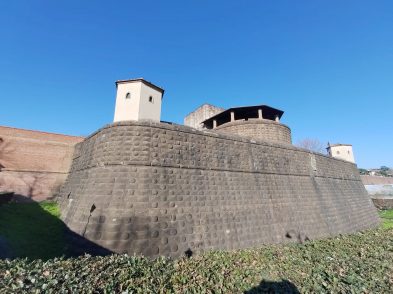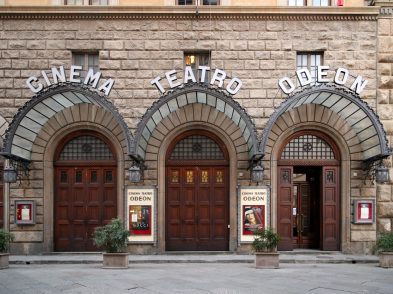Over the centuries, history has never been miserly about thrusting odd couples together onto the world stage. Yet, in pre-World War II Italy, one of the strangest pairings was when the ascetic, Indian independence, non-violent civil disobedience leader Mohandas Karamchand Gandhi met the militaristic, Italian fascist dictator Benito Mussolini in Rome in December 1931.
Gandhi and his struggle to free India of its British rulers had become famous internationally the year before with his Salt Satyagraha, soon after followed by two front covers of Time magazine. His fame spread to Italy where several books were published about him, including Autographia by Charles Freer Andrews, which was translated into Italian with the addition of a comprehensive preface by Giovanni Gentile, the philosopher and educator close to the regime who was later assassinated by antifascist partisans in Florence on April 15, 1944.
The 62-year-old Gandhi was invited to visit Italy on his return journey to India after participating at the inconclusive second Round Table Conference, held in London between September and December 1931. He was accompanied by his fourth and youngest son, Devadas; his faithful English disciple, Mirabehn (Miss Madeleine Slade); another Englishwoman, Miss Lester, with whom he had stayed whilst in London; the poetess and activist Sarojini Naidu; two male secretaries and several other members of his entourage. On December 11, Gandhi and his party left Villeneuve, in Switzerland, where he had spent five days with his friend Romain Rolland, the French writer who won the Nobel Prize for Literature in 1915. Large crowds gathered along the train route to Milan in the hope of catching a glimpse of, as Rolland described him, the strange “little man, bespectacled and toothless, {who} was wrapped in his white burnoose, but his legs, thin as a heron’s stilts, were bare. His shaven head with its few coarse hairs was uncovered…”.

On reaching Milan station, the visitors transferred to a special train the Italian government had put at their disposal for the journey to Rome, where they arrived at 8:30am the next morning. There, the Mahatma was met by General Maurizio Mario Moris, a pioneer of Italian military aviation and old friend of Rolland’s, at whose villa he would stay until his departure for Brindisi, much to Mussolini’s chagrin because he had wanted to profit by the propaganda of hosting Gandhi in the capital.
That afternoon, Gandhi was taken to visit a Montessori school and then to the Vatican Museums, where he was shown around by the director Bartolomeo Nogara. In the early evening, after a short rest at the villa, he, Mirabehn, General Moris and a secretary were taken to Palazzo Venezia to meet the Duce. Curious about each other, the meeting between the two men lasted about 20 minutes. After only Gandhi and Mirabehn were asked to sit down, Mirabehn tells us that Mussolini conversed in good English, inquiring about the current situation in India and asking if Gandhi was favourably impressed by Italy, to which his guest replied he was.
On the morning of December 13, escorted by uniformed party officials, Gandhi’s next organised visits were to four gymnasiums and the Caio Duilio legion of young sailors of the Opera Nazionale Balilla (the fascist youth organization that functioned in Italy between 1926 and 1937). Dressed in paramilitary uniforms and carrying wooden rifles, the cadets staged a march and gymnastics display. After watching this spectacle, Gandhi murmured “disgusting”.
Next, to further demonstrate the regime’s accomplishments, he was taken to visit housing projects for the poor and a kindergarten and maternity home in a newly redeveloped section of Rome and then, by car, was treated to a sightseeing tour of the vestiges of imperial Rome. Later that afternoon, the secretary of the national Fascist party, Achille Starace, and its administrative secretary, Giovanni Marinelli, received him at Palazzo Vidoni.
Back at the villa, one of the king’s daughters, Princess Maria of Savoia called on him, bringing a basket of prickly pears, known as Indian figs in Italian, as a gift. The wife of the Duce, Rachele, recounted years later that Gandhi had also visited their home, Villa Torlonia, surprising guests with his “scanty” clothing and by bringing a goat on a lead along with him. This story now appears improbable; likewise, the rumour that he watched a football match during his stay.
The Mahatma’s greatest regret was that Pope Pius XI refused his request to meet with him. The reason given in a secret police report was that the way Gandhi dressed in a white khadi, made of fabric spun by hand and a symbol of India’s bid for freedom, was “indecent” and considered inappropriate for an audience with the Holy Father. More probably, the pope did not wish to offend the English with whom he had close ties. Nonetheless, these less than complimentary comments about him and his attire were shared during Gandhi’s time in London by Winston Churchill, who opposed Indian independence and deprecatingly called him “a fakir … striding half-naked up the steps of the Viceregal Palace … to parley on equal terms with the representative of the King-Emperor.”
Leaving Rome after dinner on December 13, Gandhi and his companions reached Brindisi the following morning in time to board the steamer Pilsna, which disembarked them in Bombay 14 days later.







